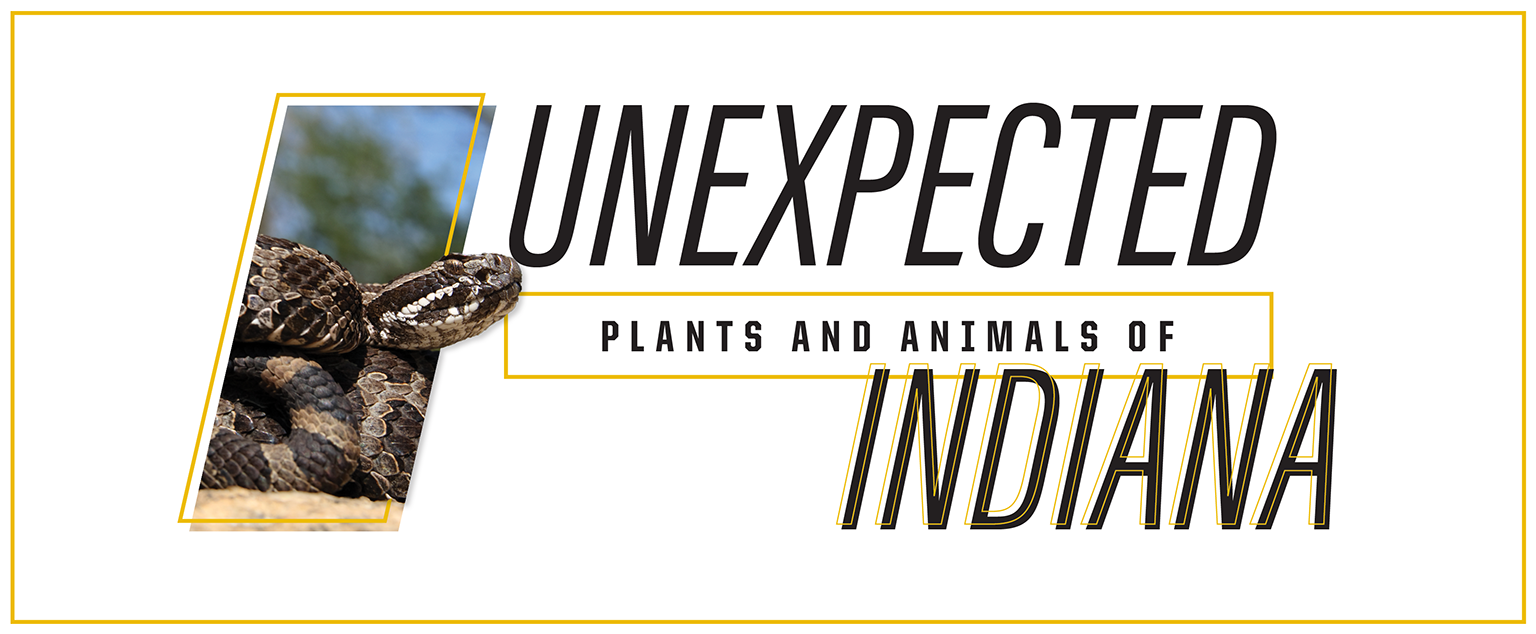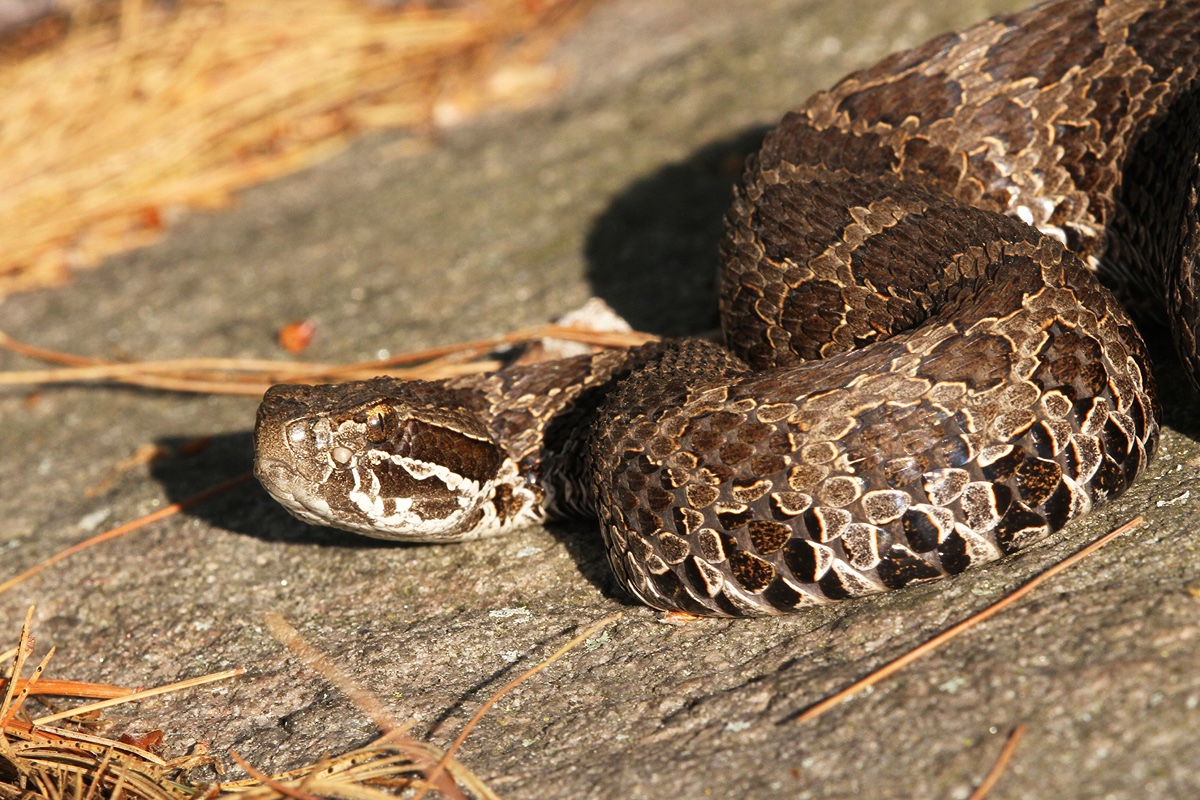Unexpected Plants and Animals of Indiana: Eastern Massasauga Rattlesnake

Almost exclusively, an online search for rattlesnakes returns images of large, aggressive-looking snakes in hot, dry deserts. In reality, rattlesnakes come in many species across the Americas in a wide variety of habitats. Eastern massasauga rattlesnakes, Sistrurus catenatus, are small, venomous pit vipers that live in the shallow wetlands of Canada and the north half of the American Midwest.
Massasaugas are rare in Indiana, but they can be found in several saturated locations, including parts of Steuben County.
“Pokagon State Park and Trine State Recreation Area are suitable habitats for the Massasaugas,” shared Steuben County Extension educator Reba Wicker. “Steuben County has more lakes than any other Indiana county.
The name “massasauga” alludes to their affinity for wetlands, originating from the Chippewa word meaning “great river mouth.”
And while the massasauga rattlesnakes’ name also references their rattles, the infamous warning is not always a reliable way to detect them.
“Massasaugas are small rattlesnakes,” explained Purdue Extension wildlife specialist Brian MacGowan. “Because of their size, people may hear their rattle and think it is just an insect buzzing.”
Conversely, people have been known to misidentify snakes without rattles as rattlesnakes. “Fox snakes, for example, are notorious for vibrating their tail quickly when they feel threatened,” MacGowan noted. “If there are dry leaves or something similar nearby, it can sound like a rattle.”
A massasauga’s rattle is made of keratin, the same substance that forms human fingernails. A chain of hollow, interlocking rings bumps together when shaken, creating the warning.
Rattlesnakes have only a single bump on their tails at birth but add a new segment to their rattle each time they shed their skin. Massasaugas molt around four times a year.
Rattlesnakes can lose their rattles through fights or accidents. The longer their rattle grows, the more susceptible it is to breaking.

Specialized muscles allow rattlesnakes to shake their tails 90 times per second. For comparison, ruby-throated hummingbirds flap their wings 50 times every second during flight.
Using its rattle is not a massasauga’s first choice.
“Rattlesnakes are typically docile,” MacGowan explained. Normally, rattlesnakes stay still or hide when they detect danger. Their camouflage often allows them to avoid confrontation.”
Rattlesnakes’ camouflage also assists them in predation. Massasaugas begin hunts by flicking their tongue to pick up the scent of prey, like voles, mice and shrews. Massasaugas, like all pit vipers, have heat-sensitive pits between their eyes and nostrils. These help them determine when their target is close enough to strike. They inject their venom and patiently keep their distance until the poison runs its course. Once their victim is dead, they swallow them whole.
Rattlesnakes also differentiate themselves from most snakes by being ovoviviparous. Instead of mothers laying eggs, snakelets hatch from eggs while still in the womb and are birthed live. While massasaugas can have up to 20 young at a time, they are listed as an endangered species in Indiana. Habitat destruction has led to population declines and will need to be monitored to conserve the homes of the massasaugas that unexpectedly live in northern Indiana’s wetlands.





